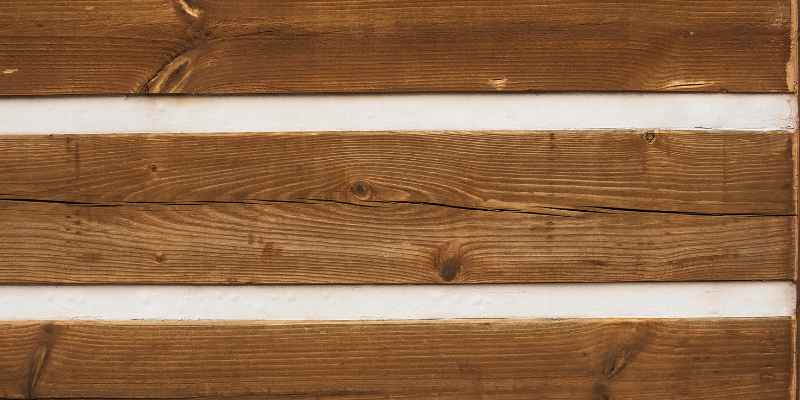No, Hemlock is not a hardwood; it is classified as a softwood. Hemlock is primarily used for construction and is readily available.
It is a fairly porous material that holds glue well, making it suitable for laminating and commonly used for laminated beams and edges. While it is not as strong as hardwoods like pine, Hemlock is still strong and can be used in heavy-duty applications.
It resists warping and twisting, and when stained, it reflects pronounced grain patterns. However, Hemlock has only moderate resistance to scratching and dents. Hemlock lumber is known for its straight grain, light weight, and ease of working with tools. It is an attractive choice for carving and can be used for various woodworking projects.
Introduction To Hemlock Wood
Hemlock wood, a popular choice for construction and woodworking projects, is often sought after for its versatility and durability. This deciduous softwood, which grows in abundance in North America, offers a wide range of advantages for various applications. In this article, we will explore the characteristics of Hemlock lumber, its uses, and the advantages and disadvantages of working with this type of wood.
Is Hemlock A Hardwood Or Softwood?
While Hemlock is commonly classified as a softwood due to its fast growth and needle-like leaves, it possesses some characteristics typically associated with hardwoods. It has tight grain patterns and a moderate density, making it suitable for some applications where hardwoods are traditionally used.
Advantages Of Using Hemlock Lumber
- Excellent workability for construction and woodworking projects
- Stable and straight grain patterns, making it ideal for various carpentry and finishing applications
- Good rot resistance and natural durability, especially when used for outdoor projects
- Reasonable pricing compared to other hardwood alternatives
Disadvantages Of Hemlock Lumber
- Prone to warping and twisting if not properly dried and stabilized
- Lower resistance to scratching and denting compared to some hardwood species
- Limited availability in some regions, affecting sourcing and pricing
- Requires regular maintenance and sealing when used outdoors to preserve its natural durability
Properties Of Hemlock Wood
Hemlock wood, despite being a softwood, possesses notable qualities such as strength, straight grain, and durability. It is often used in construction due to its moderate pricing and workability with tools, making it a reliable choice for various building projects.
Hemlock wood, although commonly used as a construction timber, is often underestimated when it comes to its properties. It possesses several unique characteristics that make it a versatile and valuable material. In this section, we will explore the weight and density, aging characteristics, and the presence of knots and cracks in hemlock wood.
Weight And Density Of Hemlock
In terms of weight and density, hemlock wood falls into the category of softwood. It is lighter compared to hardwoods such as oak or maple. On average, the density of hemlock wood is approximately 480 kg/m³. This low density makes it easier to handle and transport, while still providing adequate strength and durability for various applications.
Aging Characteristics Of Hemlock
When it comes to aging, hemlock wood exhibits some unique characteristics. Over time, the wood tends to develop a natural patina that adds to its aesthetic appeal. This patina is a result of the wood’s exposure to sunlight and other environmental factors. It gives hemlock a rustic and timeless look, making it ideal for both indoor and outdoor applications.
Knots And Cracks In Hemlock
One important aspect to consider when working with hemlock wood is the presence of knots and the possibility of cracks. Hemlock trees often have large knots, which are circular regions of dense wood growth. These knots can add visual interest to the wood, but they can also cause challenges during woodworking. It is important to carefully select pieces of hemlock with minimal knots to ensure structural integrity.
Another factor to be aware of is the potential for cracks in hemlock wood. Some factors, such as improper drying or exposure to extreme temperature changes, can cause cracks to form over time. While these cracks may affect the appearance of the wood, they can typically be repaired or concealed with appropriate woodworking techniques.
Overall, hemlock wood offers a unique combination of properties that make it suitable for a wide range of applications. Its lightweight nature, distinct aging characteristics, and the presence of knots and cracks contribute to the charm and versatility of this wood species.
Comparison With Other Types Of Wood
Strength Comparison With Pine
Hemlock usually has a higher strength-to-weight ratio compared to pine wood.
Usage Comparison With Douglas Fir
Hemlock is commonly used for moldings and trim due to its resistance to warping and twisting.
Resistance To Warping And Twisting
Hemlock reflects more pronounced grain patterns than other softwoods and has moderate resistance to scratching and dents.
Applications Of Hemlock Wood
Hemlock wood, although primarily used as construction timber, offers a range of applications due to its unique characteristics. From its use in construction to suitability for lamination and potential for carving, hemlock wood has demonstrated its versatility in various industries. Let’s explore some of the key applications of this exceptional wood:
Use In Construction Timber
Hemlock wood, a popular choice in the construction industry, boasts excellent strength and durability. Its straight grain and light weight make it suitable for various structural applications. While it may not be as commonly used as Douglas fir, hemlock wood is often selected for moldings and trims due to its resistance to warping and twisting.
Additionally, it exhibits pronounced grain patterns when stained, adding a touch of elegance to any project. With moderate resistance to scratching and dents, hemlock wood provides a reliable option for construction projects that require both functionality and aesthetics.
Suitability For Lamination
Hemlock wood’s porosity contributes to its suitability for lamination purposes. With this material’s ability to hold glue effectively, it is commonly used for laminated beams and edges. Hemlock wood’s compatibility with various adhesives makes it an excellent choice for creating strong and durable laminated structures. Whether it’s for architectural elements or furniture design, hemlock wood’s lamination potential offers endless possibilities in enhancing the structural integrity of various projects.
Potential For Carving
Hemlock wood’s straight grain and relatively soft nature make it an ideal choice for carving enthusiasts. Whether you’re a professional woodworker or a hobbyist, hemlock wood offers a pleasant carving experience due to its workability. This wood’s fine texture and manageable density allow intricate designs to be carefully crafted, resulting in exquisite finished pieces. From intricate sculptures to decorative carvings, hemlock wood’s potential for carving enables artists to unleash their creativity and bring their visions to life.
Working With Hemlock Wood
Hemlock wood is commonly used in construction due to its good supply and moderate prices. Although not as widely utilized as Douglas fir, hemlock is known for its resistance to warping and twisting, making it ideal for moldings and trim.
It also reflects pronounced grain patterns when stained.
Ease Of Working With Tools
Hemlock wood is known for its ease of working with tools, making it a favorite among craftsmen and DIY enthusiasts.
Gluing Capabilities
When it comes to gluing capabilities, hemlock wood excels in holding adhesives well due to its porous nature.
Surface Finishing
Hemlock wood offers a smooth surface for finishing, allowing for a seamless application of paints, stains, or varnishes.
Sustainability And Availability
Hemlock is a popular choice for various lumber applications due to its sustainability, availability, and affordable pricing. Let’s delve into its sustainability status, availability in the market, and its suitability for different uses.
Sustainability Status
Hemlock is not listed in the CITES Appendices, but it is reported by the IUCN as being near threatened due to over-harvesting. Sustainable forestry practices are crucial to preserving this species for future generations.
Supply And Pricing
Hemlock is abundant in the market, making it readily available for lumber needs. Expect moderate prices for this domestic softwood, making it an economical choice for various projects.
Suitability For Different Lumber Uses
Hemlock’s strength and workability make it suitable for various applications such as construction, furniture, and millwork. Its moderate resistance to scratching and its ability to reflect pronounced grain patterns make it ideal for trim and moldings.
Verdict On Hemlock Wood

Hemlock wood offers a good supply of domestic softwood, making it ideal for construction timber. It has a moderate price range and holds glue well, which is advantageous for laminating and building purposes. However, hemlock is reported as near threatened by IUCN, so sustainability could be a concern.
- Utilize hemlock for construction timber and laminating purposes due to its good supply and ability to hold glue well.
- Consider the moderate price range for domestic softwood when using hemlock for building projects.
- Take into account the sustainability status, as hemlock is reported as near threatened by IUCN.
Before choosing hemlock wood for your projects, carefully weigh the pros and cons. Take advantage of its good supply and adhesive properties while considering the sustainability aspect. Hemlock’s moderate price range for domestic softwood makes it an attractive option, but it’s essential to factor in its near threatened status reported by IUCN.
Frequently Asked Questions On Is Hemlock A Hard Wood
Is Hemlock A Hardwood Or Softwood?
Hemlock is a softwood. It is primarily used for construction and is readily available. It is a sustainable option, and its prices are moderate.
Is Hemlock Wood Good For Anything?
Yes, hemlock wood is good for lamination due to its ability to hold glue well, making it suitable for laminated beams and edges. It is also used for moldings and trim, as it resists warping and twisting and reflects pronounced grain patterns when stained.
Which Wood Is Harder Pine Or Hemlock?
Hemlock wood is harder than pine wood. Hemlock has higher strength-to-weight ratio and is suitable for heavy-duty applications like construction. Pine is also strong and can be used for structural purposes.
What Are The Disadvantages Of Hemlock Wood?
The disadvantages of hemlock wood include moderate resistance to scratching and dents, limited usage compared to other softwoods.
Conclusion
To conclude, Hemlock wood is a versatile and popular choice for various applications. Although it is technically classified as a softwood, it boasts good strength and durability. Its straight grain and resistance to warping make it suitable for moldings and trim.
Furthermore, Hemlock holds glue well, making it ideal for laminating projects. With its moderate price and availability, Hemlock is a reliable option for construction projects. Consider exploring the unique benefits that Hemlock lumber has to offer.


